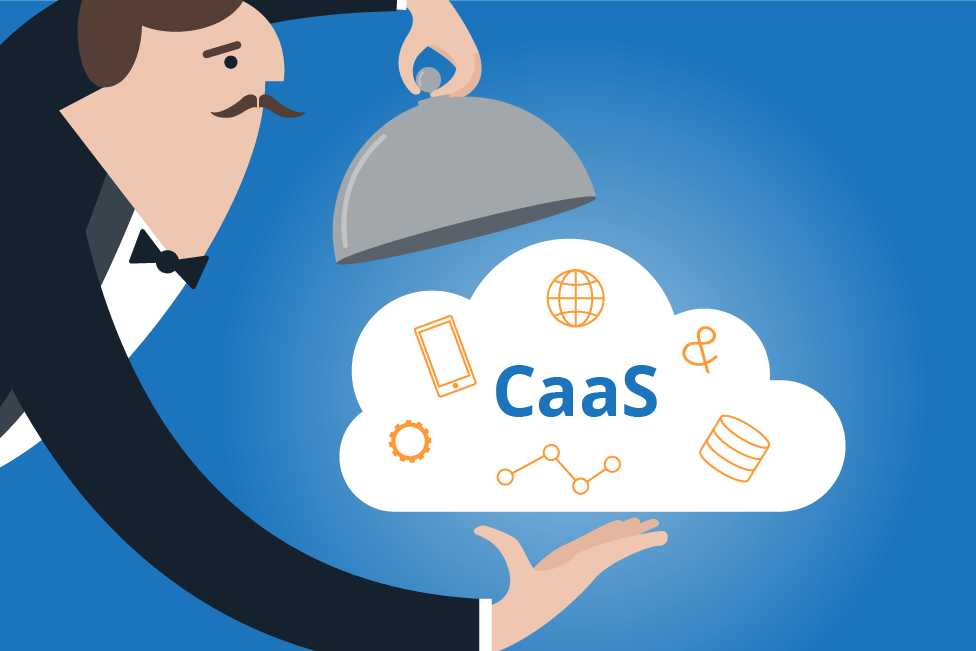What Is CaaS and Why Is It Useful?

The cloud service model Container-as-a-Service (CaaS) allows Information Technology (IT) departments and software developers to use container-based virtualization to run, organize, manage, scale, stop, and upload containers. Containers act as an alternative to traditional virtualization. Instead of relying on virtual machines to virtualize hardware, these tasks are performed at the operating system level. Containers use fewer resources, minimal memory, and operate more efficiently than virtual machines.
For those weighing the pros and cons of CaaS, here are a few reasons you should utilize these services in your day-to-day operations.
Benefits of CaaS
In short, CaaS simplifies the running process of software by enabling portability. Portability translates to flexibility since it allows you to relocate workloads effortlessly between providers. Containers can also help you minimize costs by only running the apps you desperately need. Additionally, CaaS uses only one server to run various containers, limiting hardware requirements.
These services also increase security by segregating containers, meaning if one container is compromised, the others won't experience difficulties. Different providers offer various capabilities and benefits. For more information on the pros of CaaS, check out this example.
CaaS vs. other platforms
Cloud providers can develop their versions of CaaS while differentiating their platforms through the user interface and supplementary services. When it comes to the user interface, the Docker command line manages container environments on-premise. Other providers use a management interface based on GUI, while others allow clients to point and click during the container-making and management process.
For supplementary and orchestration services, providers can use an orchestration engine to complete various tasks such as enabling containerized workloads' automatic scaling based on the administrator's parameters. According to the cloud computing basic model, CaaS falls in between Infrastructure-as-a-Service (IaaS) and Platform-as-a-Service (PaaS). However, because CaaS operates on a different container technology-based virtualization model, it can be distinguished from PaaS and IaaS.
IaaS
IaaS offers raw computing resources such as networking, storage, and servers to those who manage their application software and platform. Infrastructure-as-a-Service organizations receive data center controls without assuming the traditional overhead and operational risks, which typically involves utilizing a cloud orchestration tech such as OpenNebula, Apache Cloudstack, or OpenStack.
PaaS
In this form of cloud computing, a different party offers application software and hardware. Through this PaaS model, end-users can create, manage, and regularly run their applications while the platform provider takes charge of the infrastructure. Besides the computing resources and storage, the provider also provides prebuilt tools for customizing, testing, and developing applications.
SaaS
SaaS is referred to as rentware or subscribeware and refers to the delivery and licensing model where consumers acquire software licenses through subscription. Providers host this form of cloud computing centrally. SaaS is an increasingly popular method of delivering business apps, including management software, office software, gamification, messaging software, CRM, accounting, virtualization, and Geographic Information System (GIS), among others. It provides all the necessary updates, infrastructure, maintenance, and platforms for running and supporting software.
FaaS
Function-as-a-Service is ideal for users who require cloud computing for applications' components and functions. The service provider automatically manages the client's software for the web's server, virtual machine OS, and physical hardware.
Choosing a CaaS for Your Company
If you're debating incorporating CaaS into your business model, you can opt to purchase a platform and run the containers yourself or select a provider-managed solution. Before you arrive at a final decision, you should compare on-site and public cloud deployments, and assess if your IT personnel have the necessary skills to manage the containers, budget accordingly, accommodate foreseeable growth, and match your experience with said containers.
You should also consider the billing models, cluster management, the available orchestration tools, the possibility of operating multi-container software, the supported file formats, storage functions, and networks. Enterprises with prior experience managing a container are better equipped to run their platform. However, those new to container-based models should consult with a provider, as it allows the freedom to experiment and determine what your staff can handle comfortably.
It's crucial to choose a provider with secure hypervisors, virtual operating system images, and hosts. Although the provider is responsible for managing the container, there are some precautions you should take to promote security, including auditing E2 access changes to verify the appearing modifications are authorized.
Note that the orchestration platforms for CaaS, which handle fundamental tasks, differ tremendously between different providers. Some of the common platforms include Google Kubernetes, Apache Mesos, Nova-docker, and Docker Swarm. Before settling on a provider, review their orchestration platform for optimal results.
839GYLCCC1992



Leave a Reply